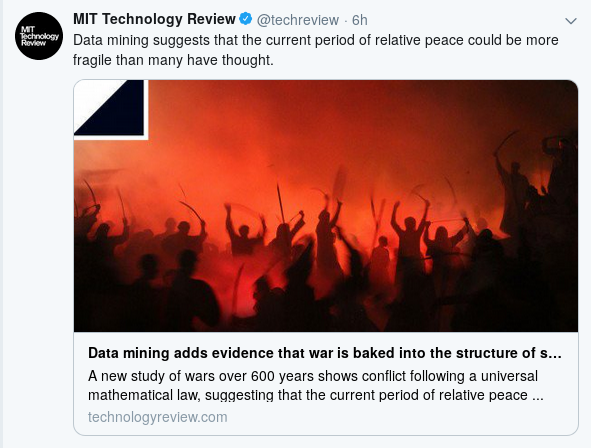I follow the MIT Technology Review on Twitter: @techreview and was amazed to see this AM:
Period of relative peace?
Really? Smells like someone has been cooking the numbers! (Another way to say bias in data mining/science.)
Unlike annual reports from corporations and foundations, you read the MIT post in full, Data mining adds evidence that war is baked into the structure of society, the original paper, Pattern Analysis of World Conflicts over the past 600 years by Gianluca Martelloni, Francesca Di Patti, and Ugo Bardi, plus you can access the data used for the paper: Conflict by Dr. Peter Brecke.
From general news awareness, the claim of “…period of relative peace…” should trigger skepticism on your part. I take it as a generally accepted fact that the United States was bombing somewhere in the world every day of the Obama administration and that has continued under the current U.S. president. It’s relatively peaceful in New York, London, and Berlin, but other places in the world, not so much.
I skimmed the original article and encountered this remark: “…a relatively peaceful period during the 18th century is noticeable.” I don’t remember 18th history all that well but that strikes me as inconsistent with what I do remember. I have to wonder who was peaceful and who was not in the data set. Not saying it is wrong from one view of the data, but what underlies that statement?
Take this article, along with its data set as an exercise in finding bias in data mining/science. Bias doesn’t mean the paper or its conclusions are necessarily wrong, but choices were made with regard to the data and that shaped their paper and its conclusions.
PS: A cursory glace at the paper also finds the data used ends with the year 2000. Small comfort to the estimated 32 million Muslims who have died since 9/11, during this “period of relative peace.” You need to ask peace for who and at what price?
